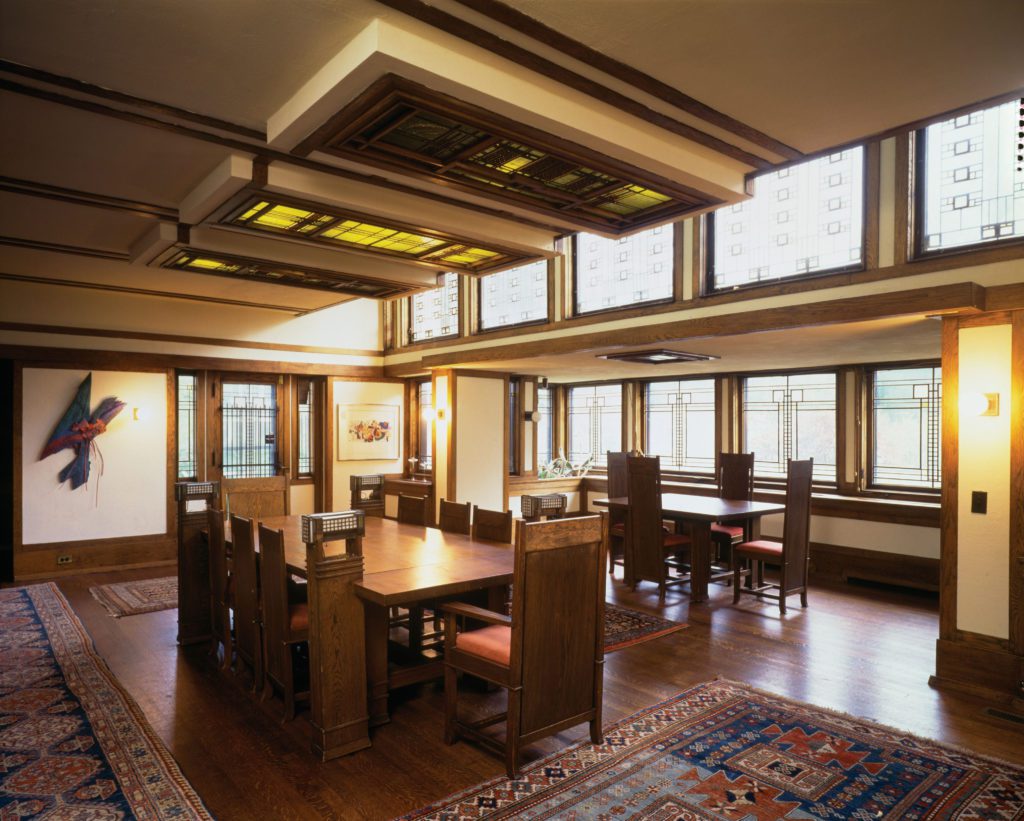Real Estate: Wright Pushed the Envelope
By • August 7, 2019 0 1503

Few architects have had so transformative an effect on how we live and think about home design as Frank Lloyd Wright. The things we take for granted today — open floor plans, natural materials, oversized windows and seamless transitions to the outdoors — all arose from his singular and inventive vision.
The evolution of that aesthetic can now be seen at the District Architecture Center, 421 7th St. NW, where “Frank Lloyd Wright: Architecture of the Interior” is on display until Sept. 6. The exhibition is curated by Virginia Terry Boyd, emerita professor in the University of Wisconsin-Madison’s Design Studies Department.
Compact yet expansive (much like Wright’s homes), it features reproduction drawings, photographs and photographic murals illustrating the ways in which Wright integrated building, interior and objects into one “harmonious whole.”
A timeline of Wright’s greatest residential hits, the exhibition includes: Usonians (modest open-plan homes designed to be affordable and accessible for the average American); the Mossberg House (an example of how subordinate rooms — bathrooms and kitchens — were much smaller than the main living space); the Sijistan (where pitched ceilings and vertical lighting maintained a spacious feel despite a standard layout of windows and walls); and the Boynton House (with its clerestory windows and recessed artificial skylights).
Wright didn’t stop with the floor plan. To maximize space and honor the geometric order of the house, he also designed furniture — some built-in and not always comfortable — and other elements to “create a sense of order, harmony and completeness.”
Fun fact: Back in the early ’90s, I lived in a Usonian in northwest Baltimore City. There were walls of floor-to-ceiling windows that opened to a back garden with a pool, radiant-heated blue tile floors, an open living/dining room, an ergonomic kitchen and really tiny bathrooms (talk about subordinate rooms!). Cabinets, bookcases and a banquette and dining table were all built-in. And, yes, we had to audition our furnishings with the owner to make sure they were Wright-worthy. (They were.)

Lloyd Lewis House. Courtesy Frank Lloyd Wright Foundation Archives (MoMA/Avery Library, Columbia University). © Hedrich-Blessing
For details about the Wright exhibition, visit aiadc.com or call 202-347-9403.
Closer to home, AIADC will hold a lecture on the Pope-Leighey House, an iconic Usonian with a storied past in Alexandria, Virginia. Built in 1940, the home has been moved twice. It was later opened to the public by the National Trust for Historic Preservation. To register for the Aug. 12 event, visit aiadc.com/calendar.
And for your viewing (or purchasing) pleasure, TTR Sotheby’s is currently presenting three distinctive Usonians in McLean, Virginia; Minneapolis; and Town and Country, Missouri. For details, visit Theo Adamstein online at theoadamstein.ttrsir.com.

